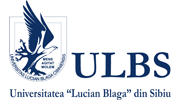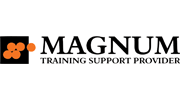Polychlorinated biphenyls (PCB)
Known as: Pyralen, Asbestol, Bakola131, Chlorextol, Phenochlor, Pyralène, Askarel, Apirolio, Clophen, Delor, Fenclor, Hydol, Inerteen, Kanechlor, Noflamol, Pyranol, Pyroclor, Saft-Kuhl. Sovol, Sovtol, Therminol
What is it? The polychlorinated biphenyls or PCB, erroneously named pyralenes, are a class of 209 organic substances used in industry for their dielectric characteristics.
Use (purpose): PCBs were very frequently used in the past
- In electrical transformers,
- in capacitors,
- in high voltage isolators,
- in cooling fluids,
- as additives in paints used for engine housings or for components submitted to a working regime at high temperature,
- in adhesives,
- in pump engines
- in microwave ovens etc.
- as additive to self-copy paper
- as additive to mineral oils or welding products.
They have a particularly high persistence in the environment (between 94 days and 2700 years, according to the molecular characteristics), bioaccumulating in high ratios in living organisms, reason for which they are presently found even in not inhabited Arctic regions. In fish, the documented levels were up to 127 000 times higher than in the surrounding water.
Current status: Starting from 2001, the Stockholm Convention has listed PCBs in the dirty dozen of the most dangerous persistent organic pollutants. Due to its multiple use within the energy sector, the signing countries have agreed on the provision of exemptions from use, having in view its removal in time by replacing it with less harmful substances.
In Romania, these substances have been banned for production, import and export since 2004. The substance is currently undergoing a removal process in accordance with Annex A to the Convention.
The country report on Romania from 2014 to the Secretariat of the Stockholm Convention indicates the fact that Romania has asked for an exemption for PCB – currently undergoing the stage of removal stage for industrial usage as the national network for transport, distribution and conversion of electrical power becomes modernized. In 2012, PCB was still to be found in 48,518 electrical devices (transformers, capacitors etc.) still in use which contained 1,110,722 liters of PCB oil (1 liter contained 1.58 kg PCB), and also in 14,190 decommissioned devices containing 143,242 liters of PCB oil. The same report indicates the fact that the inventory of PCB stock had not been finalized in 2014, and it was to be expected for these quantities to be much higher in reality.
In Romania: employed since the 40's and banned since 1985.
Effects on health: PCBs are toxic, ecotoxic (toxic for the environment) and toxic for the reproduction. Toxicity varies by the number of chloride atoms contained in the substance and by its molecular mass. They are fat soluble, accumulating in the fatty tissues, including in the breast milk. They are mutagens, inducing malformations occurring in the embrionary stage.
The following effects have been documented: endocrine disorders in thyroid, sterility, skin disorders: chloracnea, hyperpigmentation, neurologic and behavioural disorders: low memory, chronic liver diseases, cirrhosis, cardiovascular, immunotoxic, muscular, gastrointestinal effects. PCBs are carcinogenic, especially the PCB 126 (liver cancer, bile ducts tumours, pancreatic cancer) inducing hepatocarcinoma, leukaemia, lymphoma, GI tract tumours.
In acute exposures: nails and eyelashes falling, skin inflammation, facial oedema, oozing, thymus atrophy, kidney atrophy, important liver lesions, urinary ducts lesions, death.
Exposure limits, lethal dose: the lethal dose varies according to the involved substance, from 1 g/kg bw in food to 19 micrograms/kg bw in corn oil (contaminated with ash from PCB 1260 cremation).
Contamination sources:
Food: the main source of exposure worldwide, estimated to 90% of the total exposure: fish, meat, eggs and dairy products from animals fed or pastured in polluted fields or neighbouring waste incinerators or hazardous waste or EEEW treatment plants. For this reason, numerous areas are forbidden to fishing for human consumption such as the Seine River in France, etc.
Occupational: former employees in companies producing electric equipment and electronics, former employees in the energy sector charged with the maintenance and repairs of the electrical transformers, workers from the hazardous waste treatment plants (transformer dismantling and elimination, energy transformation stations, electric equipment and electronic waste) and in waste incinerators.
Air: aerosols of contaminated soil, fumes and smoke (solid particles) from the waste incinerators.
Soil: direct skin contact with contaminated soil.
Useful references:
- EFSA, Monitoring of Dioxins and PCBs in Food and Feed, EFSA Journal, 2012, 10(7)2832 62
- EFSA, 2010. Results of the monitoring of non dioxin-like PCBs in food and feed. EFSA Journal 2010, 8(7), 1701, 35 p., DOI:10.2903/j.efsa.2010.1701 (on line : www.efsa.europa.eu).
- Salgovicová D, Pavlovicová D (2007). Exposure of the population of the Slovak Republic to dietary polychlorinated biphenyls. Food Chem. Toxicol., 45(9), 1641-9.




